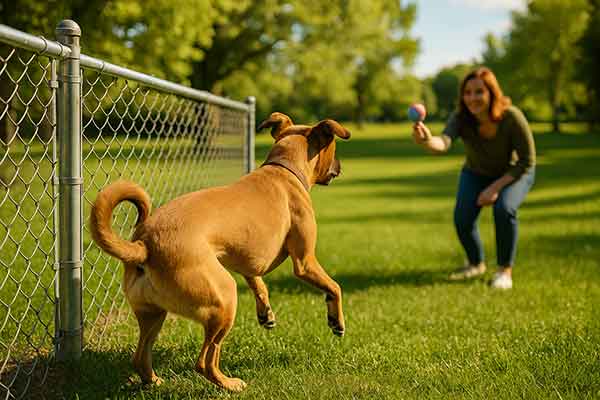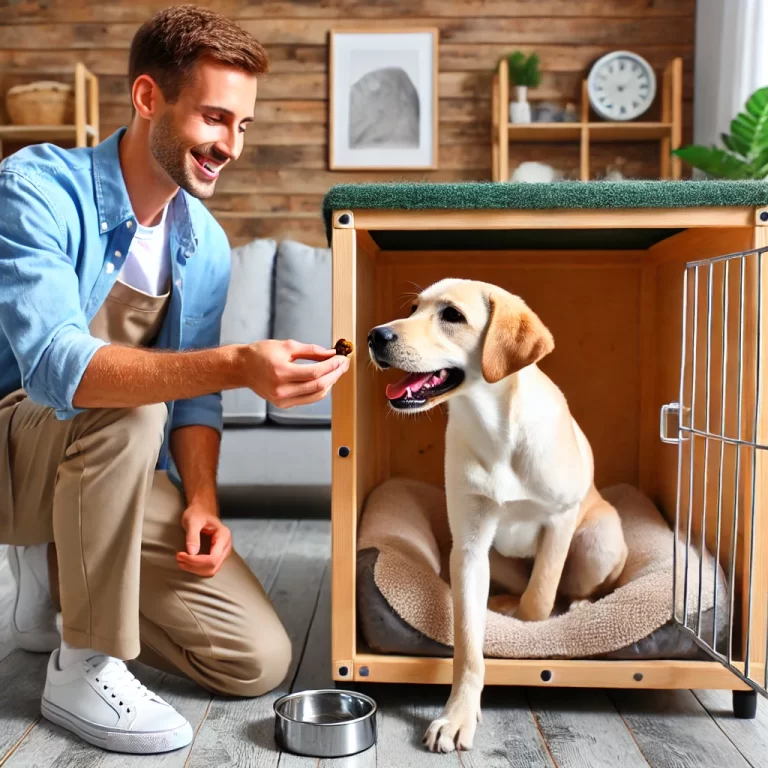How Do You Keep a Dog from Jumping the Fence? | Training & Safety Tips
Does your dog treat your backyard fence like an Olympic hurdle? If so, you’re not alone. Many dog owners struggle with pets who can jump, climb, or even scale their way out of fenced yards. Not only is it frustrating, but it can also be dangerous. So, how do you keep a dog from jumping the fence?
This comprehensive guide covers physical solutions, training techniques, and behavior-based strategies to help keep your dog safely within your property—without sacrificing their freedom or well-being.
Table of Contents
- Why Do Dogs Jump Fences?
- Physical Solutions to Prevent Fence Jumping
- Training Techniques to Discourage Jumping
- The Role of Mental and Physical Enrichment
- Tools and Devices That Can Help
- What NOT to Do When Trying to Stop Fence Jumping
- FAQ
Why Do Dogs Jump Fences?
Before solving the issue, it’s crucial to understand why your dog is trying to escape. Common reasons include:
- Boredom: Lack of physical or mental stimulation can lead dogs to seek adventure.
- Separation anxiety: Dogs may try to escape to find their owner.
- Mating instinct: Unneutered dogs may jump fences when in heat or sensing another dog nearby.
- Fear or phobia: Loud noises like fireworks or thunderstorms can cause a flight response.
- Territorial curiosity: Dogs are naturally inquisitive and may want to chase animals, people, or cars.
Physical Solutions to Prevent Fence Jumping
Creating physical obstacles is often the first and most effective step. Here are proven ways to make your fence escape-proof:
1. Increase Fence Height
Many agile dogs can easily jump a 4- or 5-foot fence. Raising it to at least 6 feet can deter most jumpers.
2. Add an L-Footer or Roll Bar
L-footers (angled extensions at the top of the fence) or rolling bars make it harder for dogs to climb or clear the fence.
3. Use a Lean-In Fence Topper
Install angled panels or lattice that lean inward at the top of the fence, discouraging climbing or jumping attempts.
4. Block the Launch Zone
Move any nearby objects like wood piles, dog houses, or furniture that your dog can use as a launching platform.
5. Install Visual Barriers
Dogs are more tempted to jump when they can see out. Use privacy slats, bamboo panels, or solid fencing to reduce outside stimuli.
Training Techniques to Discourage Jumping
Behavioral training is essential, especially if your dog is escaping out of habit or excitement. Try these methods:
1. Teach the “Stay” Command
Reinforce boundary training with strong obedience commands like “stay,” “leave it,” or “come.” Use positive reinforcement.
2. Use Boundary Training
Walk your dog along the inside perimeter of the fence daily, rewarding them for staying close and calm.
3. Set Up Controlled “Jump Test” Scenarios
Stage situations where your dog is tempted to jump and correct the behavior with redirection and rewards.
4. Desensitize Triggers
If your dog jumps due to distractions (e.g., other dogs, squirrels), train desensitization exercises to reduce reactivity.

The Role of Mental and Physical Enrichment
Many dogs jump fences simply because they’re bored or under-exercised. Address these root causes with enrichment:
- Daily walks and off-leash time in safe environments
- Interactive toys and food puzzles
- Training sessions and games like hide and seek or fetch
- Doggy daycare or playdates for social dogs
A tired dog is a happy (and grounded) dog!
Tools and Devices That Can Help
Sometimes, extra tools can assist in training and containment:
- GPS tracking collars: Useful if your dog still manages to escape
- Dog-safe obstacle deterrents: Motion-sensing water sprayers or scent-based repellents
- Invisible fencing: Use with caution and never as a primary method without training
- Pet containment systems: Use professionally designed kennel or run solutions for chronic escape artists
What NOT to Do When Trying to Stop Fence Jumping
Well-meaning owners sometimes use tactics that can backfire. Avoid these:
- Yelling or punishment: This may increase anxiety and cause more escape attempts
- Shock collars without proper training: Can cause fear, confusion, or aggression
- Tethering your dog in the yard: This is unsafe and can result in injury or strangulation
- Ignoring the issue: A dog that escapes once will often do it again
FAQ
What is the best fence height to stop a dog from jumping?
For most medium to large dogs, a 6-foot fence is ideal. Very athletic breeds may need up to 7 feet or angled extensions.
Will neutering or spaying my dog reduce fence jumping?
Yes, in some cases. Unaltered dogs are more likely to roam in search of a mate, increasing escape attempts.
Is it okay to use an invisible fence?
Only as a supplement to proper training. Invisible fences can fail if a dog is determined and may not keep out other animals.
My dog only jumps when I’m not home. What can I do?
Try setting up cameras to observe behavior, reinforce the fence, and provide interactive toys or calming aids to ease separation anxiety.
Can dog jumping the fence be a sign of a bigger issue?
Yes. Chronic fence-jumping may signal anxiety, lack of stimulation, or even medical issues. A vet or trainer can help assess the root cause.
Conclusion
So, how do you keep a dog from jumping the fence? It starts with understanding why your dog is trying to escape, then applying a combination of physical barriers, behavioral training, and enrichment to keep them engaged and safe.
With consistency, care, and a proactive mindset, you can create a backyard environment that your dog loves—and stays in. The result? Peace of mind for you and safety for your beloved canine companion.





